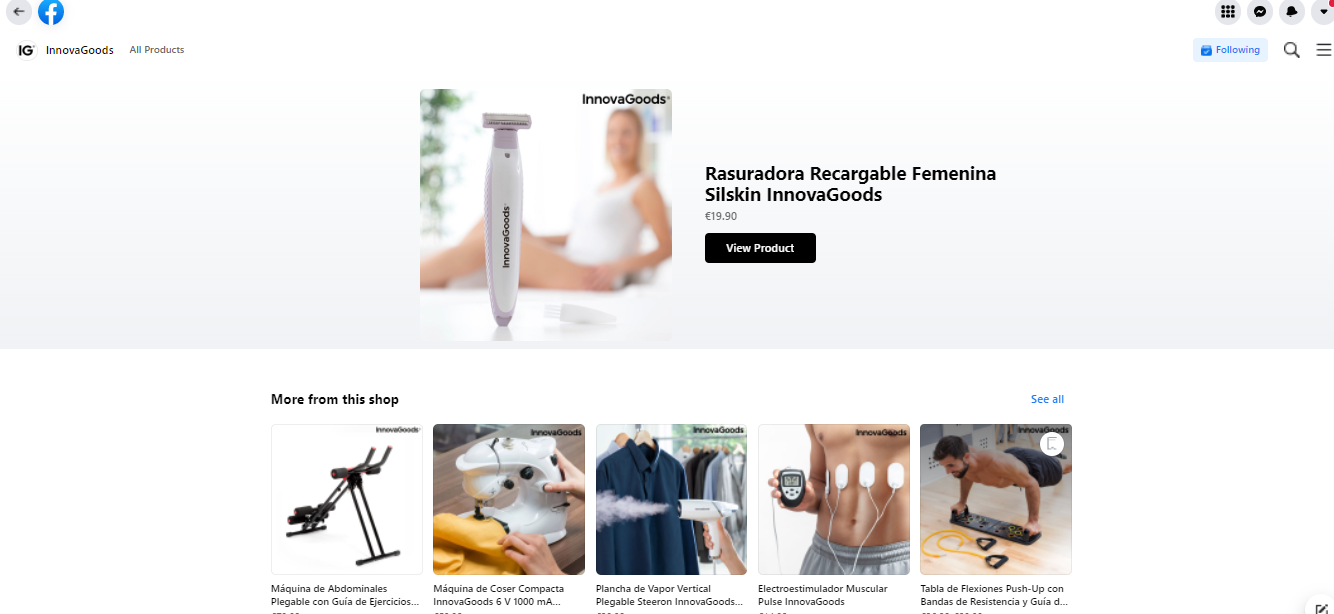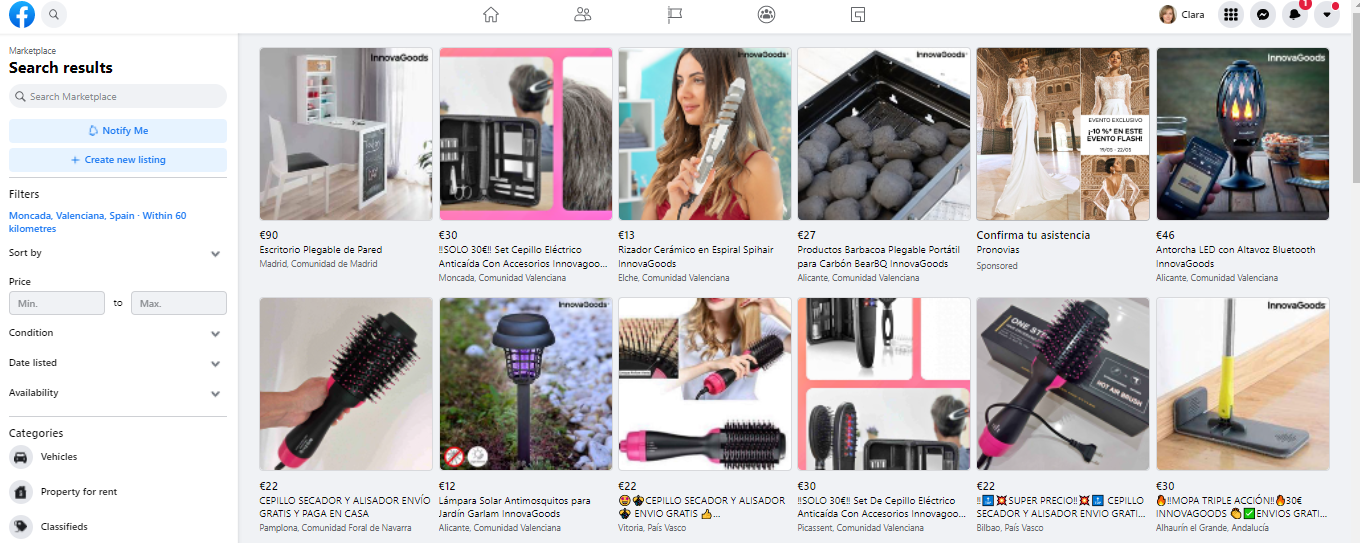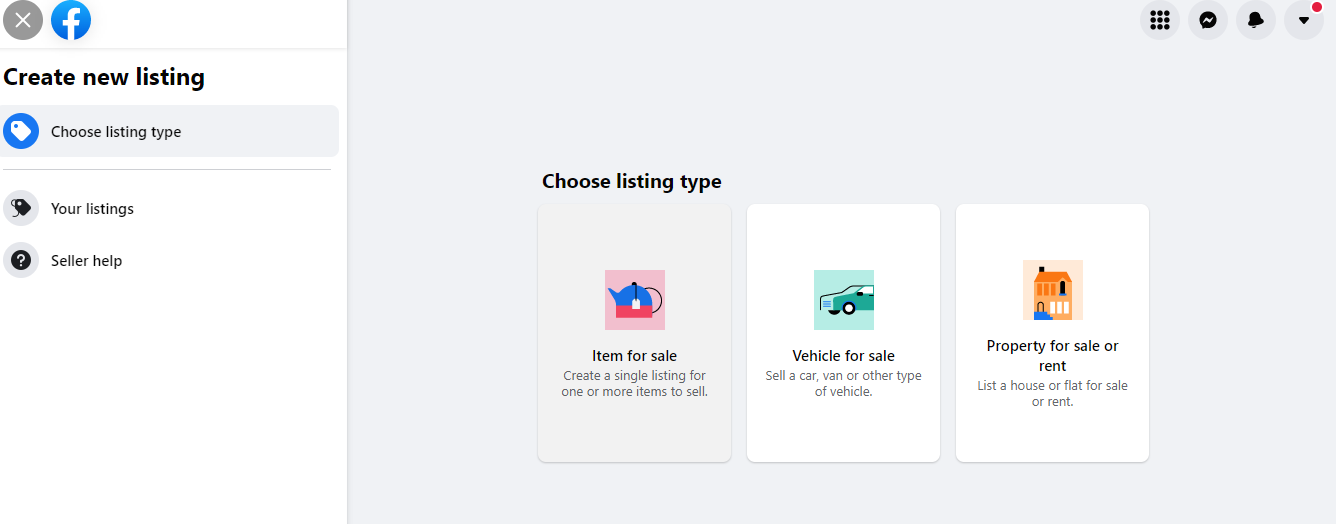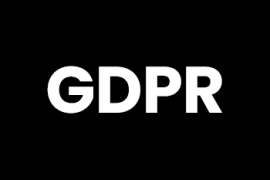Share This Article
This might be one of those million dollar questions: how do you sell on Facebook? And that’s normal, because it is still one of the public’s favourite social networks. Today, the social network has almost 3 billion monthly active users. In this article, we tell you the key factors for doing social selling on Facebook.
According to a study carried out by Statia, 44% of consumers admit that Facebook influences the purchases they make and, currently, there are millions of advertisers using Facebook Ads to promote their products.
Selling on Facebook: advantages and disadvantages
We know that social selling is a good idea for your dropshipping store, but it isn’t as easy as it might seem. To start with, you have to invest a significant amount of time and money, something that not everyone is willing or able to do. If you want to sell more on Facebook, we tell you all the advantages and disadvantages of this platform below:
Advantages of selling on Facebook
– Creating a community: one of the main advantages of having a business page on Facebook is the opportunity to – organically – create a community where you can bring potential buyers together.
– Platform to carry out paid campaigns: Facebook Ads is an extremely powerful tool for generating impulse sales. Moreover, another advantage is the ease of analysis for the campaigns, which enables you to make decisions much more quickly.
– Excellent audience segmentation: linked to the previous point, with Facebook it is very easy to focus campaigns towards segmented audiences in a precise way, not just using demographic data, but also by interests, tastes and preferences.
– Possibility of conversing with customers: a major advantage of Facebook – and most social networks – is the possibility of talking to your customers, whether through the comments, private messages, etc. Also, bear in mind that most social networks have become a customer service point for businesses, so you constantly have to pay attention and join in the conversation.
Disadvantages of selling on Facebook
– It takes a lot of effort to create a community organically: it is true that it isn’t easy to increase the size of the community without investing in advertising. Although it can be done, it is a slow processes and requires a lot of effort: preparing a good content strategy, performing attractive actions that have appeal, working on collaborations to increase your reach, etc.
– You will have to pay to obtain a wider reach: as we mentioned earlier, it is becoming increasingly complicated to create a community without investing in advertising. That’s why, if you want to increase your reach, you are highly likely to need to spend some money, no matter what.
– High degree of competition with other social networks: there are an increasing number of platforms that users spend their time on. Instagram, of course, but also TikTok for a younger audience, or Twitter, with a very different audience.
Before you start: how to create and optimise your catalogue

To start selling on Facebook, you are going to need an up-to-date and optimised catalogue. You won’t just use it to tag your products in posts, but also to appear in the Facebook Store, create dynamic adverts, etc.
For example, with dynamic ads, you can create automatic campaigns with products from your online store, both on Instagram and Facebook, without the need to upload them one by one. This type of campaign is perfect for remarketing on social networks and will help you to have an impact on users that have visited your website.
But, returning to the most important thing: to create the catalogue and synchronise your product feed on Facebook, we recommend you use a plugin or module on your ecommerce platform. That way, the fields that Facebook requires you to complete will be done automatically.
Starting is quite simple, but keeping it optimised is another kettle of fish. And if you are still asking yourself whether the success of your campaigns will be directly related to how optimised your catalogue is, the answer is yes.
Five steps to optimise your catalogue on Facebook:
As we mentioned earlier, having a product catalogue which is optimised for Facebook will help you to improve the visibility of your products, the conversion ratio and the click-through rate. But, what type of improvements can you make to your Facebook catalogue? You will find some examples below:
- Make sure you synchronise the minimum compulsory fields of your products
Facebook requires, as a minimum, that products have the following fields. If any are missing or incorrect, it is likely that the product won’t load in the feed.
- ID: a unique identifier, the SKU code if possible.
- Title: a specific product title, with a limit of 150 characters.
- Description: a brief description with the main features of the product.
- Availability: the availability of the product.
- Condition: refers to whether it is: new, refurbished, used.
- Price: which should go with the three letter currency code and use the point for the decimals.
- Link: the link to the product data sheet in your online store.
- Image_link: link to the main image of the product, which should take up a maximum of 8MB.
- Brand: the brand the product belongs to.
- The more fields, the better
In addition to the required values, we recommend you add all the additional fields possible such as: size, colour, product category, material, offers, etc.
- Delete duplicated products
If you have the same product with different variations (colour, size, etc.), make sure they are grouped together and that there are no duplicated products.
- Optimise the titles
The product title is the only copy you have to capture the user’s attention in the adverts, so imagine how important it is! Write attractive titles and guide your customers perfectly to find what they need.
- Refresh the catalogue at least once a day
It is important to keep all the information about your products up to date. Imagine that your star product is out of stock and, because you didn’t update the feed, users end up on your website with a bad user experience. Luckily, you can schedule the update of your catalogue automatically, even on an hourly basis.
How to sell on Facebook Marketplace

Facebook’s marketplace, like any other, is a meeting place for buyers and sellers from all over the world. In it, you can find new, refurbished and second hand products, and it has become a powerful platform to boost the sales of any business.
So that you better understand how it works, Facebook wants to boost the sales of the local community, which is why it categorises items according to the proximity of the buyer and positions the products that are nearest to the buyer’s location. Additionally, the algorithm captures data from users’ searches and displays products related to their history.
As you can see, there are many benefits to listing and promoting the products of your dropshipping online store. The main advantages of selling on Facebook Marketplace are:
- Ease of use: you can list your products with just a few clicks.
- Optimisation of products: to take maximum advantage of the sales potential, in the Marketplace you can upload up to 10 photos, write your own description, etc.
- It is free: You don’t have to pay to list on the tool and Facebook does not charge commission for sales.
First steps in Facebook Marketplace

As a seller, you can use your business profile to start to create product listings. Indeed, we advise you to check the commercial policies thoroughly to prevent future complications with your listings. On the other hand, you will also be able to create paid campaigns so your ads appear in the marketplace without needing to post the products directly on the platform.
- Create a new listing.
- Choose the product category.
- Type the advert details: title, description, price and condition of the product. Our advice is to apply SEO practices to your item descriptions.
- Upload up to 10 photos: make sure they are attractive enough for potential customers. The recommended resolution is, as a minimum, 1080×1080 px.
- List your advert and, you’re ready to go!
As well as complying with all these requirements, it is also important that you maintain a high response rate. In fact, Facebook awards the “Very responsive” badge so that buyers can keep this in mind. To improve in this respect, you can use chatbots with FAQs about delivery, payment method, stock availability, etc.
Selling on Facebook Ads: how to create campaigns
Advertising campaigns on Facebook are a critical aspect of having an online store, and more so if you do dropshipping. Whether you like it or not, you are going to need to spend part of your investment on paid campaigns to scale your project, so it is important for you to understand how to create and optimise your adverts on Facebook. Additionally, as shown in the previous section, an extremely interesting option is to appear in Facebook Marketplace.
To take your first steps on Facebook Ads, you need to have an ad account linked to Meta Business Manager. Once you have your account, we recommend you start to create your campaigns from the Ads Manager.
It is also important for you to familiarise yourself with the structure of the campaigns, which consist of three parts:
– Campaign: where you configure the name, objective (awareness, consideration or conversion), and the budget.
– Ad set: here you can configure the activation dates for the campaign, the segmentation of the target audience and the locations where you want to display your adverts.
– Ads: lastly, the adverts are what the campaign has created. In these, you have to select the format (video, photo, carousel, etc.) and the content.
Recommended resolution, weight and size for adverts on Facebook Ads.
Each creation for your adverts should be adapted to meet the resolution and size requirements of the tool locations. Below, we give you a brief guide:
For the feed:
Resolution: 1080×1080 px. or 1200×628 px.
Image format: JPG or PNG.
Video format: MP4 and MOV.
For video, it is advisable to upload it without pillarbox or letterbox (the black bars)
Maximum video size: 4GB
For stories:
Resolution: 1080×1920 px. (the text inside of 1080×1420 px)
Image format: JPG or PNG.
Video format: MP4 and MOV.
Size: maximum 4 GB
Bear in mind that each clip lasts for 15 seconds
In order for your campaigns to be as successful as possible, we advise you to keep them up to date at all times. Carry out A/B tests and find out what works best for your business. The world of social networks evolves so quickly that you have to adapt at the same speed. This is the true key to success: it isn’t the best person that survives, it’s the one that adapts best.
In conclusion: the main aspects for selling on Facebook
After this short guide on how to get started to optimise your profile and your catalogue and find the best strategies for selling on Facebook, we summarise the most important aspects below:
– Facebook continues to be one of the most important social networks, with almost three billion active users each month. If you want to scale your business, doing social selling on Facebook is almost a requirement.
– Keep your catalogue updated. As we have seen, the Facebook catalogue – used properly- can be an extremely powerful tool and one of the main sources of traffic to your online store.
– You need some knowledge of Facebook Ads. If you have a dropshipping store, you are going to need to invest in advertising: to test winning products, to encourage impulse sales, to increase the reach of your account, etc.
We hope you have found this article useful and that you have found out a little more about social selling and how to make the most of Facebook to sell more. If you are starting out in the world of dropshipping or you have any suggestions, we would be delighted to read your comments. Go for it!





 Contact
Contact





